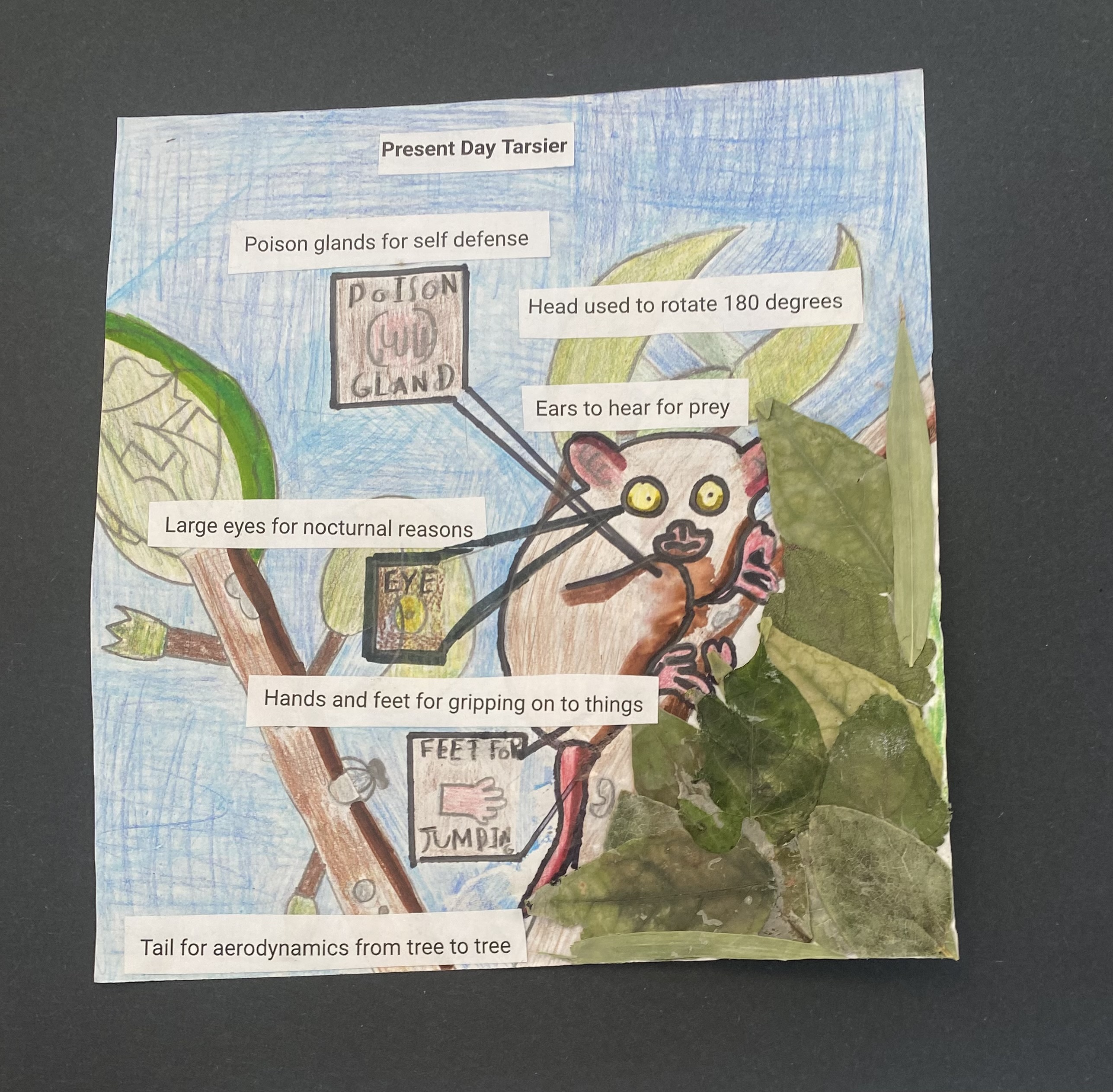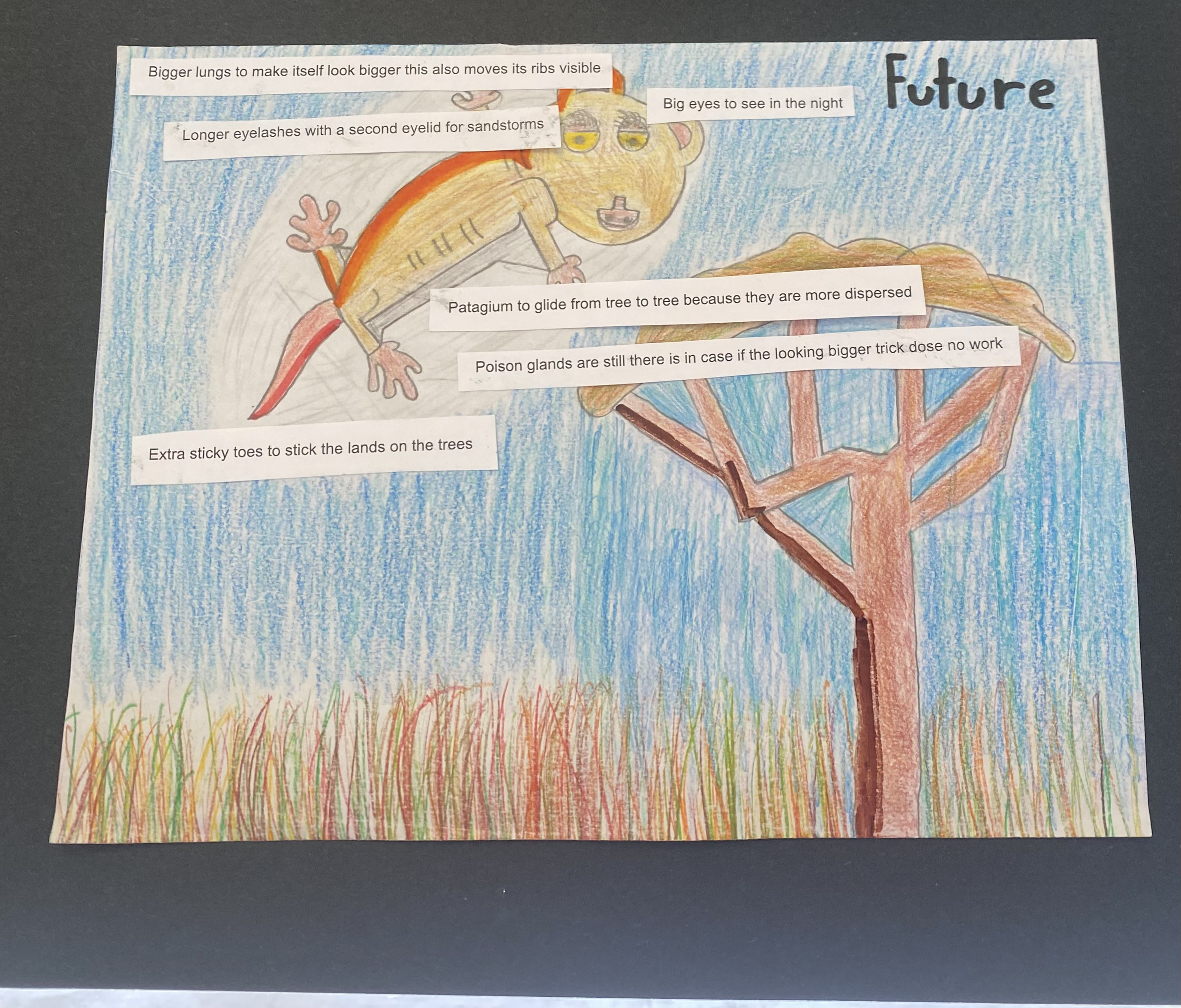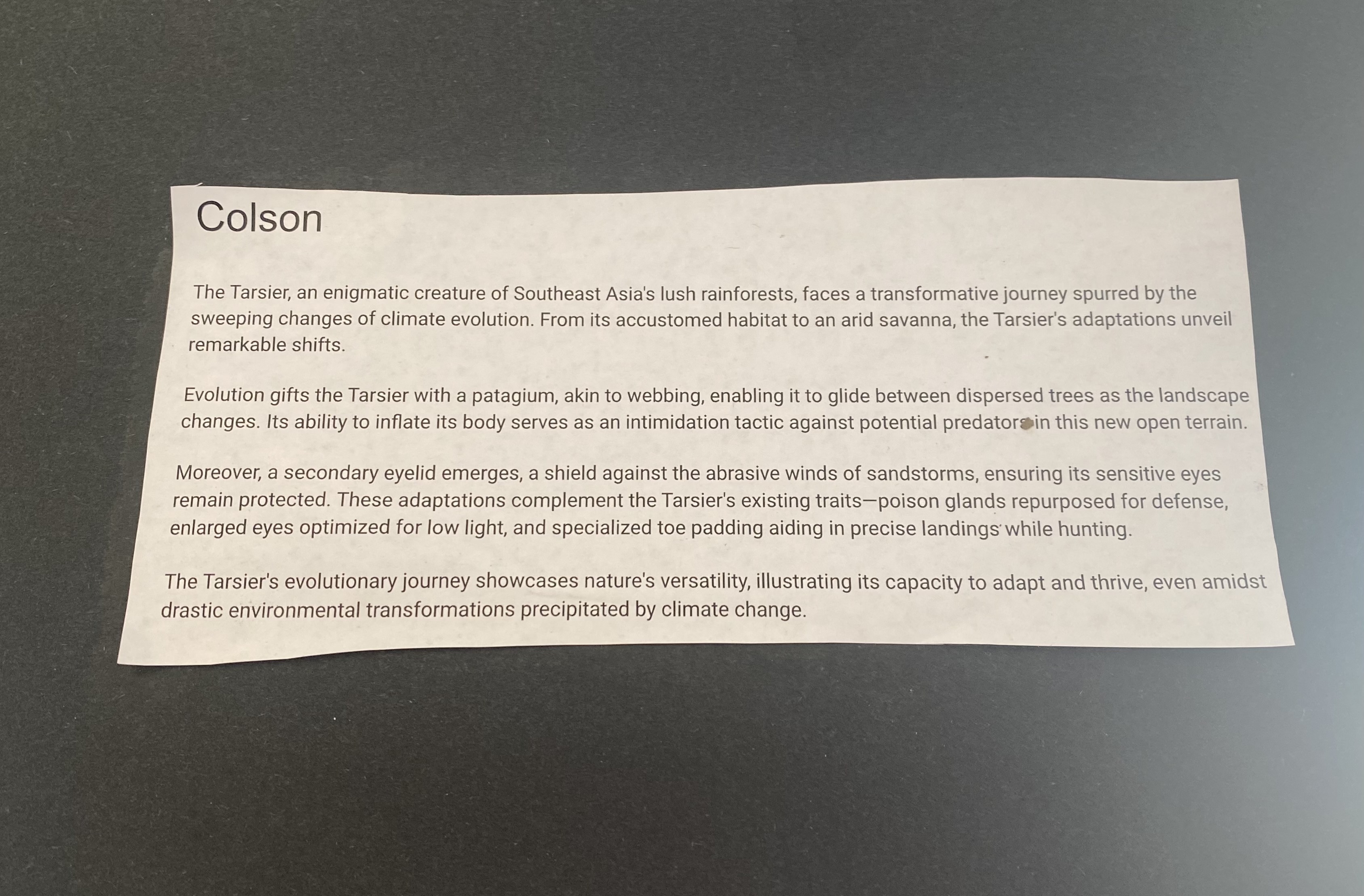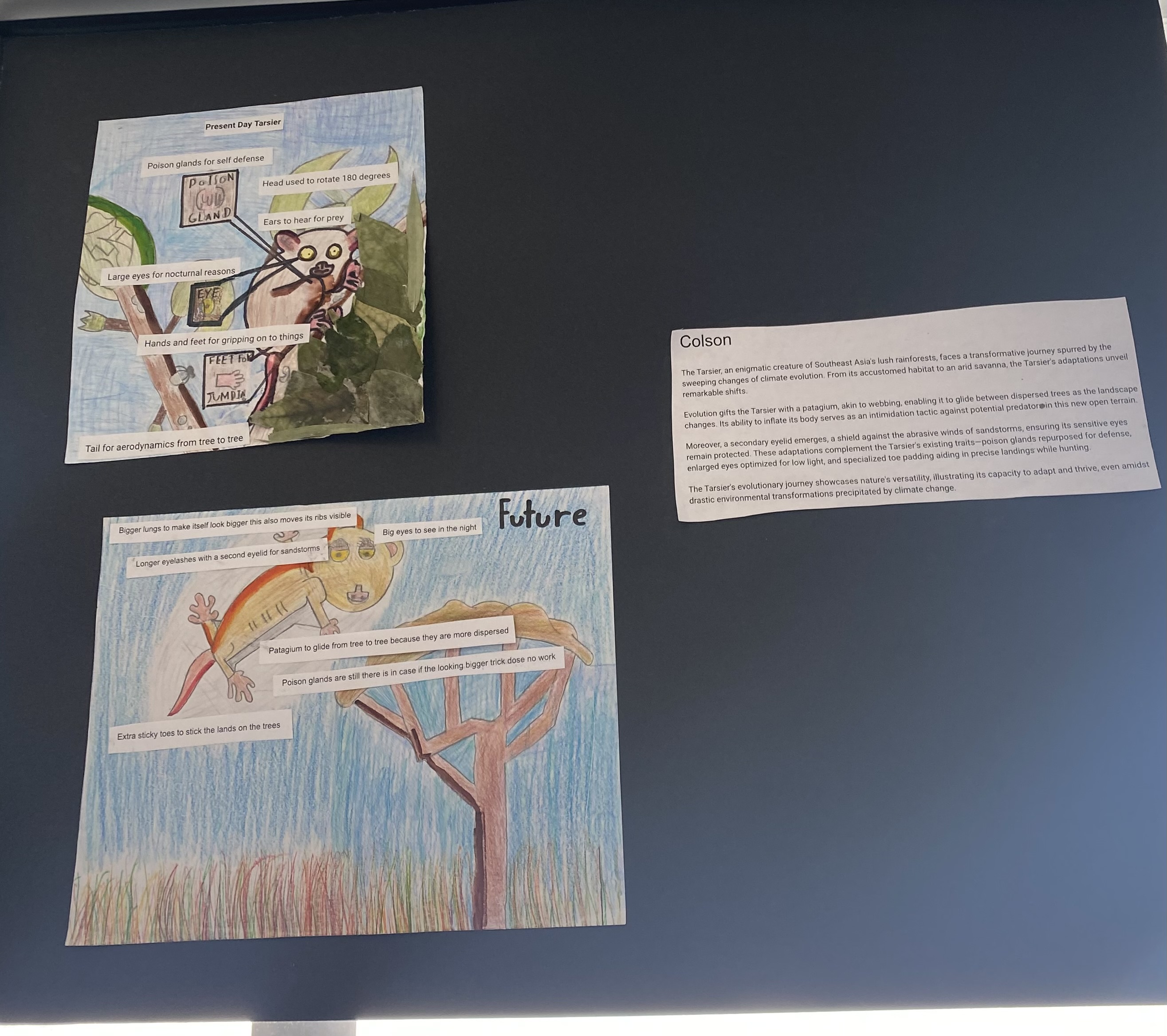The Tarsier, an enigmatic creature of Southeast Asia's lush rainforests, faces a transformative journey spurred by the sweeping changes of climate evolution. From its accustomed habitat to an arid savanna, the Tarsier's adaptations unveil remarkable shifts.
Evolution gifts the Tarsier with a patagium, akin to webbing, enabling it to glide between dispersed trees as the landscape changes. Its ability to inflate its body serves as an intimidation tactic against potential predators in this new open terrain.
Moreover, a secondary eyelid emerges, a shield against the abrasive winds of sandstorms, ensuring its sensitive eyes remain protected. These adaptations complement the Tarsier's existing traits—poison glands repurposed for defense, enlarged eyes optimized for low light, and specialized toe padding aiding in precise landings while hunting.
The Tarsier's evolutionary journey showcases nature's versatility, illustrating its capacity to adapt and thrive, even amidst drastic environmental transformations precipitated by climate change.
Contact us
Thank you for your interest in contacting Future Engineers. We look forward to connecting with you!
General Inquiries
support@futureengineers.orgSponsorship Inquiries
sponsor@futureengineers.org



